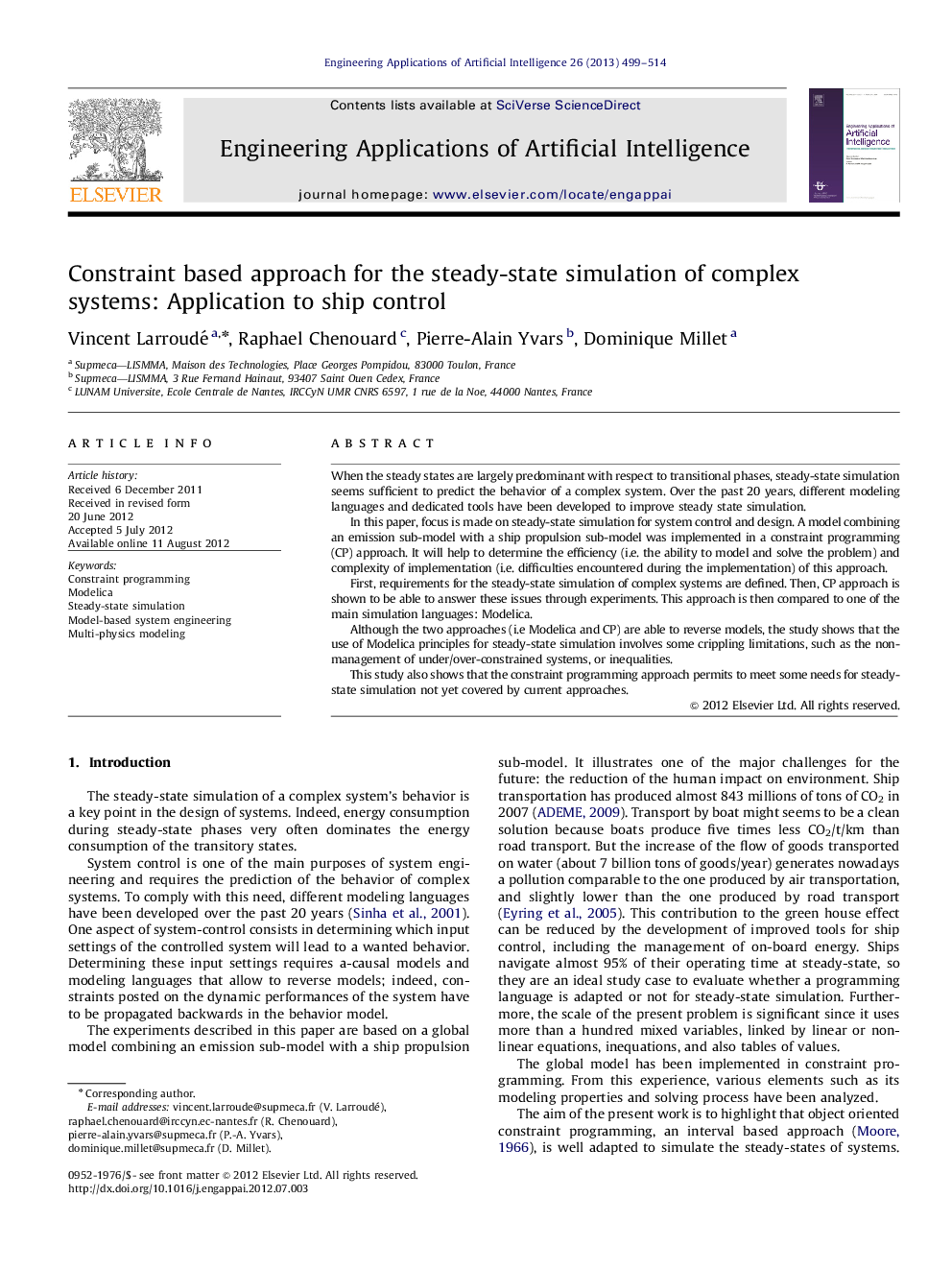| Article ID | Journal | Published Year | Pages | File Type |
|---|---|---|---|---|
| 381077 | Engineering Applications of Artificial Intelligence | 2013 | 16 Pages |
When the steady states are largely predominant with respect to transitional phases, steady-state simulation seems sufficient to predict the behavior of a complex system. Over the past 20 years, different modeling languages and dedicated tools have been developed to improve steady state simulation.In this paper, focus is made on steady-state simulation for system control and design. A model combining an emission sub-model with a ship propulsion sub-model was implemented in a constraint programming (CP) approach. It will help to determine the efficiency (i.e. the ability to model and solve the problem) and complexity of implementation (i.e. difficulties encountered during the implementation) of this approach.First, requirements for the steady-state simulation of complex systems are defined. Then, CP approach is shown to be able to answer these issues through experiments. This approach is then compared to one of the main simulation languages: Modelica.Although the two approaches (i.e Modelica and CP) are able to reverse models, the study shows that the use of Modelica principles for steady-state simulation involves some crippling limitations, such as the non-management of under/over-constrained systems, or inequalities.This study also shows that the constraint programming approach permits to meet some needs for steady-state simulation not yet covered by current approaches.
